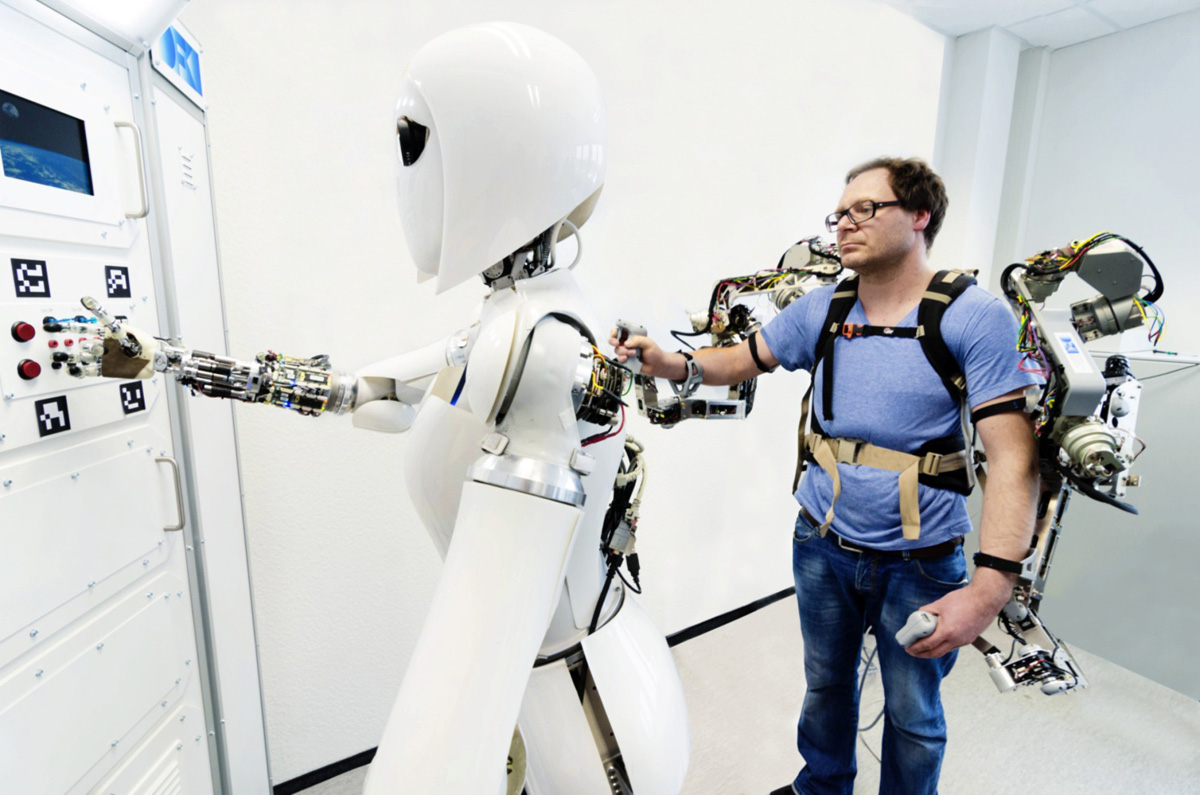Exoskeleton active (CAPIO)
Capio Upper Body Exoskeleton for Teleoperation
Technical Details
System description
The dual arm upper body exoskeleton is a human-machine-interface used for teleportation of robotic system in a safe and intuitive way with natural movements. The exoskeleton has 8 contact points to the operator and the kinematic structure follows the human movements of the arms and the torso. It transmits the movements to the target system and gives the operator a haptic feedback. The kinematic structure has eight active degree of freedom at each arm and four active degree of freedom at the back.
Further system details:
- in house developed STM 32F4 microcontroller board for low-level-control
- in house developed joint electronics, consisting of four PCB (power supply, FPGA, sensorics, communication)
- 3-Layer control architecture. Local velocity-torque control on the low-level, dynamic control and gravity compensation at mid-level, using the open source RBDL library
- mapping of the movements via UDP
Videos
Capio Exoskeleton

Demonstration of the Capio active upper body exoskeleton in teleoperation scenarios.
Capio Exoskeleton: Control via biosignals

Demonstration of the Capio exoskeleton control via biosignals: The intended movement of the human operator is detected by the biosignal data processing which triggers the execution of the targeted movement by the exoskeleton. By means of an eye tracker the desired interaction is detected (focusing on a virtual bottle) and by electroencephalographic signals (EEG), the intended movement and the performing limb are determined. Furthermore, by means of electromyographic signals (EMG), the intended movements are verified.


